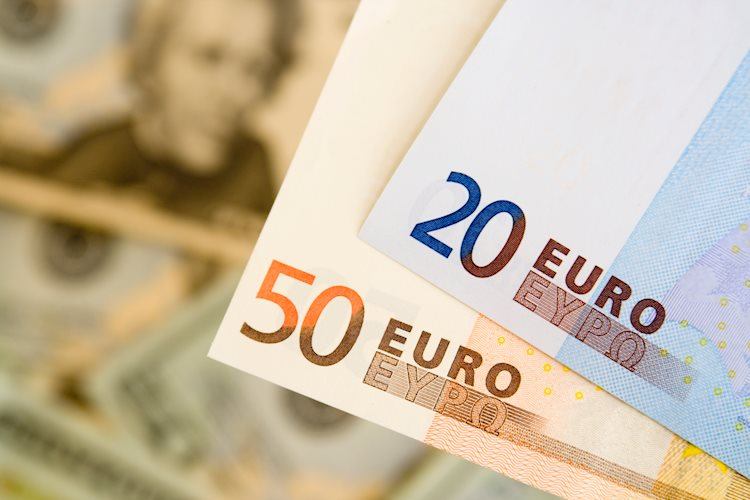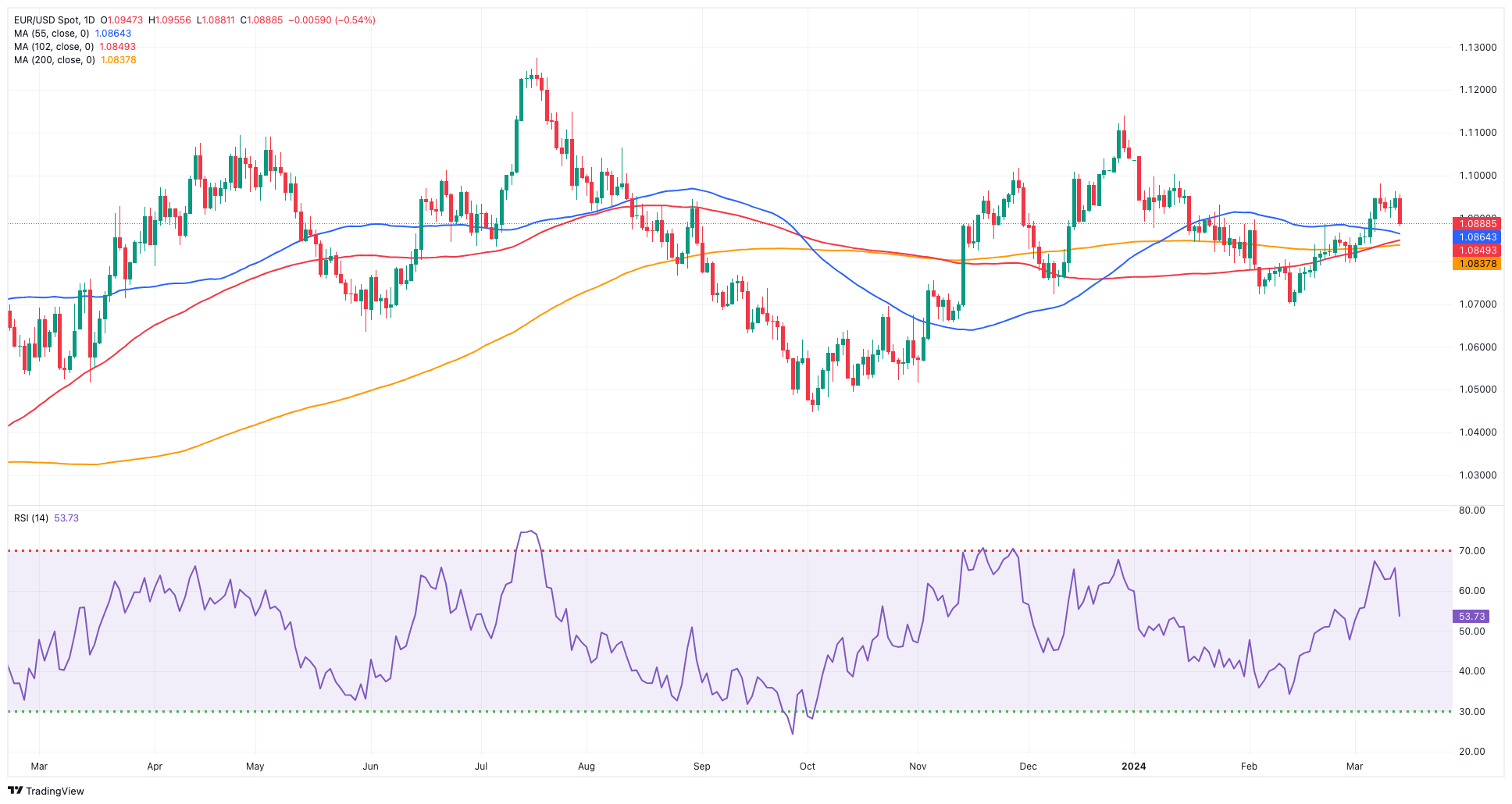
- EUR/USD tumbled to the area below 1.0900.
- The Greenback regained momentum on firm data, yields.
- ECB officials favoured a June rate cut (and even earlier).
The renewed aversion to riskier assets in combination with auspicious results from the US docket reignited the buying pressure on the US Dollar (USD), opening the door to increasing weakness around EUR/USD on Thursday.
In this context, spot reached weekly lows in the sub-1.0900 zone while the USD Index (DXY) resumed its uptrend past the 103.00 hurdle, maintaining the positive performance on a weekly basis.
The resurgence of the Dollar’s bid tone this time coincided with another robust performance in US yields across various maturity periods, mirroring the upward movement observed in German 10-year bund yields, which climbed further north of 2.40%.
That said, higher US Producer Prices coupled with further signs of a persistently tight labour market, as per weekly Initial Claims, lent extra legs to the Dollar, while smaller-than-estimated Retail Sales showed that consumer spending continued to cool down in February, reinforcing the case of a rate cut by the Fed in the summer.
Looking at the broader macroeconomic landscape, both the Federal Reserve (Fed) and the European Central Bank (ECB) are expected to commence their easing cycles possibly in June. However, the pace of subsequent interest rate cuts may differ, potentially shaping distinct strategies for both central banks. Nevertheless, the ECB is not expected to significantly lag behind the Fed.
According to the FedWatch Tool provided by CME Group, the likelihood of a rate cut in June has risen to around 60%.
From the ECB backyard, board member Knot voiced support for the initial rate cut to take place in June, followed by additional cuts in September and December. In contrast, there was no news from his colleagues Muller and Lane, who indicated the need for more information before the ECB considers rate cuts and emphasized the importance of avoiding calendar guidance, respectively. Adopting a more hawkish perspective, member Stournaras advocated for two rate cuts prior to the summer recess.
In summary, the relatively sluggish fundamentals of the euro area, juxtaposed with the resilient US economy, bolster expectations of a stronger Dollar in the medium term, particularly as both the ECB and the Fed potentially implement their easing measures almost simultaneously. In such a scenario, EUR/USD could experience a more significant correction, initially targeting its year-to-date low around 1.0700 before potentially revisiting the lows observed in late October 2023 or early November in the 1.0500 region.
EUR/USD daily chart
 EUR/USD short-term technical outlook
EUR/USD short-term technical outlook
The breakout of the March peak of 1.0981 (March 8) may drive EUR/USD to test the weekly high of 1.0998 (January 11), which strengthens the psychological barrier of 1.1000 and comes ahead of the December 2023 peak of 1.1139 (December 28).
On the downside, if the pair goes below the 200-day SMA at 1.0837, it might hit its 2024 low of 1.0694 (February 14). The November 2023 low of 1.0516 (November 1) comes next, seconded by the weekly low of 1.0495 (October 13, 2023), the 2023 low of 1.0448 (October 3), and the round level of 1.0400.
Meanwhile, while EUR/USD stays above its 200-day Simple Moving Average (SMA) of 1.0837, further gains are likely in the short term.
The downward trend appears reinvigorated in the 4-hour chart. That being said, the initial level of support is 1.0882, ahead of 1.0867, with the 200-day SMA at 1.0837, followed by 1.0761. The next upward obstacle appears to be 1.0981, followed by 1.0998. The Moving Average Convergence Divergence (MACD) stayed positive, and the Relative Strength Index (RSI) collapsed below 35.
